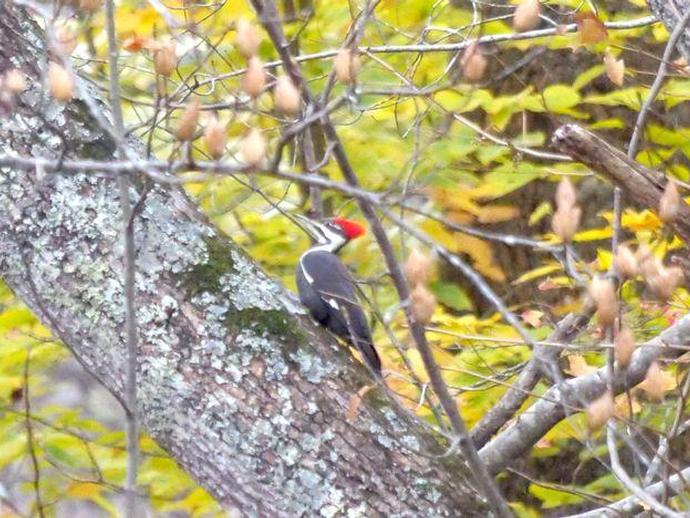November 23, 2021
Ben here with today's edition of #BenInNature presented by our friends at Carter Bank & Trust!
Since I first started doing these nature posts, I've had a goal of one day taking some really nice, clear photos of a pileated woodpecker (Dryocopus pileatus). As you can see, that day has not yet arrived, but let's talk about pileated woodpeckers anyway!
The pileated woodpecker is the largest woodpecker in the U.S. (with the possible exception of the ivory-billed woodpecker, but despite my fervent wishes to the contrary, that species is probably extinct). These magnificent birds can be found year-round in the southeastern U.S., up along the east coast, and then west through Canada and back down into the Pacific Northwest and California. They're also one of our easiest woodpeckers to identify given that they're nearly the size of a crow!
These woodpeckers favor mature hardwood forests, and they mainly eat insects such as carpenter ants and beetle grubs. They will hammer large, nearly rectangular holes into trees in their search for food, and they will also forage on the ground. If you're very lucky, they may also visit your suet feeder in the winter months!
Pileated woodpeckers make their nests by excavating large cavities in dead or dying trees. These nest cavities can be so large that they sometimes cause smaller trees to break in half! However, these nest cavities benefit more than just the woodpeckers; in future years, they provide nests for owls and other birds.
Even if you don't see a pileated woodpecker, you can listen for their call; it's a distinctive high, whinnying cry that almost sounds like something from the tropics.
ABOUT #BenInNature
Social distancing can be difficult, but it presents a great opportunity to become reacquainted with nature. In this series of posts, Administrator of Science Ben Williams ventures outdoors to record a snapshot of the unique sights that can be found in the natural world. New updates are posted Monday - Friday, with previous posts highlighted on the weekends. This series of posts is made possible thanks to the support of VMNH Corporate Partner Carter Bank & Trust (www.cbtcares.com).
NATURE PHOTO IDENTIFICATIONS
If you discover something in nature that you would like help identifying, be sure to message us right here on Facebook with a picture (please include location and date of picture) and we'll have our experts help you identify it!

 Hours & Admissions
Hours & Admissions Directions
Directions

